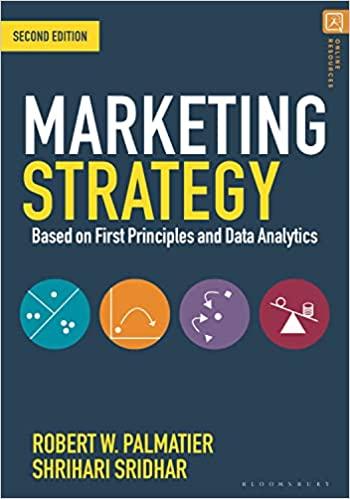The following case is a story of AIRCO, a leading manufacturer of automated test equipment systems for
Question:
The following case is a story of AIRCO, a leading manufacturer of automated test equipment systems for clients in the aviation and oil and gas industries. As automated test equipment systems became more common and commoditized in the aviation and oil and gas sectors, AIRCO started to see increased competition for its products, followed by a drop in market share and profits. AIRCO decided to use its sales force to develop a more focused relationship with its customers but faced a dilemma about what messages its sales force should enforce to build the relationship. AIRCO undertook systematic analysis using data from customers to better understand how to organize its customer relationship efforts and thereby build relationship equity through the BOR stack.
Established in 1999, AIRCO is a leading manufacturer of automated test equipment systems for clients in the aviation and oil and gas industries. Its customers (aviation operators like Boeing and rig operators like Schlumberger) relied on semi-automated test systems in the 1990s that were prone to calibration errors that could be very costly for them. AIRCO broke through into the test equipment system market by offering the first full automated system, which quickly became the market leader based on its performance, reliability, and calibration accuracy.
By 2008, AIRCO expanded its sales operations worldwide, with 58 additional centers located in North America and Europe. All its products came with a three-year warranty, loaner program, and technical support and AIRCO boasted of the best technical support sales force in the business. However, as the market for automated test equipment grew larger and completely engulfed the semi-automated test system market, many new competitors entered the market. Some competitors included those that served only semi-automated systems that came into the market after AIRCO’s 10-year exclusivity patent expired. Some others were brand new niche players that added more smart features than AIRCO and commanded a higher price.
Hence, AIRCO felt sandwiched between low-priced, mass-market players and high-priced, niche market players. In particular, its much vaunted sales force felt like it was stuck in a value dilemma. On the one hand, it was promising its customers more features, which would be costly for AIRCO to develop, with the belief that these features would add more value, market share, and revenue. On the other hand, it was forced to reduce price since it had to compete with a barrage of new entrants. But lowering these prices meant that it could not provide the add-on features that some competitors offered. Regardless, AIRCO needed to act in a focused manner since market share, revenue, profit, and net income had dropped two years in a row for the first time in the company’s 20-year history.
Competitors always react and failing to understand and address these competitive retaliations will lead to poor business performance. Thus, firms must address competitive attacks by building and maintaining sustainable competitive advantage (SCA). Relationship equity is important for companies since it helps generate and appropriate customer value. AIRCO decided to use its sales force to develop a more focused relationship with its customers but faced a dilemma about what messages its sales force should enforce to build the relationship. Specifically, they asked:
● Did relationship marketing efforts by AIRCO lead to increases in customer satisfaction and revenue?
● Did specific type(s) of relationship marketing efforts (i.e. efforts based on price, product features, or ongoing service and support) generate more increased customer satisfaction and revenue for AIRCO?.....
QUESTIONS
1. What is the mean level of customers’ satisfaction with AIRCO’s price, product features, ongoing service and support, as well as overall customer satisfaction?
2. What is the correlation among customers’ satisfaction with AIRCO’s price, product features, ongoing service and support, overall customer satisfaction, and customer revenue?
3. Perform a regression analysis with customers’ satisfaction with AIRCO’s price, product features, and ongoing service and support as independent variables and overall customer satisfaction as the dependent variable. What can you inform the sales force based on the regression results?
4. Perform a regression analysis with overall customer satisfaction as the independent variable and revenue as the dependent variable. If customer satisfaction increases by 1 point, how much does revenue increase?
Step by Step Answer:






